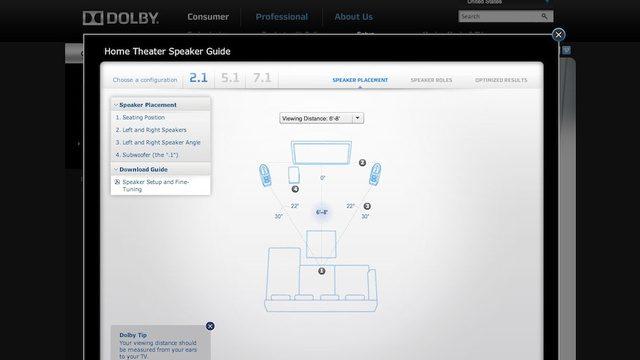Not all of us who would like a home theater have an extra room we can spare. Living in small apartments and sharing space with family and roommates oftens means having to forgo a dedicated home  theater room (and an office, and a gym, and a bar . . . ) But there are ways to make the most out of small spaces, so that anybody can design a home theater, no matter how little room they have to work with.
theater room (and an office, and a gym, and a bar . . . ) But there are ways to make the most out of small spaces, so that anybody can design a home theater, no matter how little room they have to work with.
From Lifehacker
Small spaces aren't horribly forgiving. The first thing you should do is make a map of your living room and plan out where everything is going to go. It would be best to do this in an empty room, but if you're already moved and settled in, you may need to shuffle your furniture around to get the best placement for all of your gear. A number of things can have an effect on how well your home theater looks and sounds when it's all connected and powered up, but here are a few things to keep in mind:
- Measure out your space. Specifically, measure the distance between where you'll be seated and where your TV and speakers will be. If you have an idea where everything will go, take those measurements too. Now, compare those measurements to this helpful TV viewing distance chart. It'll show you where your optimal viewing distance is based on the type of video (720p, 1080p, etc) you're watching. Then compare your speaker placement against this Dolby guide and this guide from Crutchfield. The right distance and angle matters a lot. Make sure your speakers are angled towards the seating, too.
- Pay attention to light and sound. When you turn out all of the lights and sit down in front of the TV, do you still get a lot of light from elsewhere in the house? Is your TV opposite a window with streetlights outside, or the setting sun? You might consider some blackout curtains to help shield the screen from glare, or TV placement that cuts down on that excess light. The same goes for your speakers--if the room is too empty or the speakers too far away, they can echo, which never sounds good. On the other hand, if the room is too packed, they may be muffled behind furniture. Look around for places to set them up or mount them so there's a clear line to where you sit that isn't too far away.
- Don't hesitate to use your walls. Mounting a TV to the wall has never been easier, and even if you're renting a space and don't want to put holes in the walls, there are plenty of ways to do it without damage (Just don't put it over the fireplace.) The same goes for your speakers. If you have a very small space, putting box speakers on the floor may not be a good option, but on the wall--angled down to your couch--is a great idea. The same goes for any surround-sound speakers you may have. They can go on the wall behind your couch. Both options save you valuable floor space, and help you make use of vertical space you may not otherwise use.
Additional Resources


 theater room (and an office, and a gym, and a bar . . . ) But there are ways to make the most out of small spaces, so that anybody can design a home theater, no matter how little room they have to work with.
theater room (and an office, and a gym, and a bar . . . ) But there are ways to make the most out of small spaces, so that anybody can design a home theater, no matter how little room they have to work with.